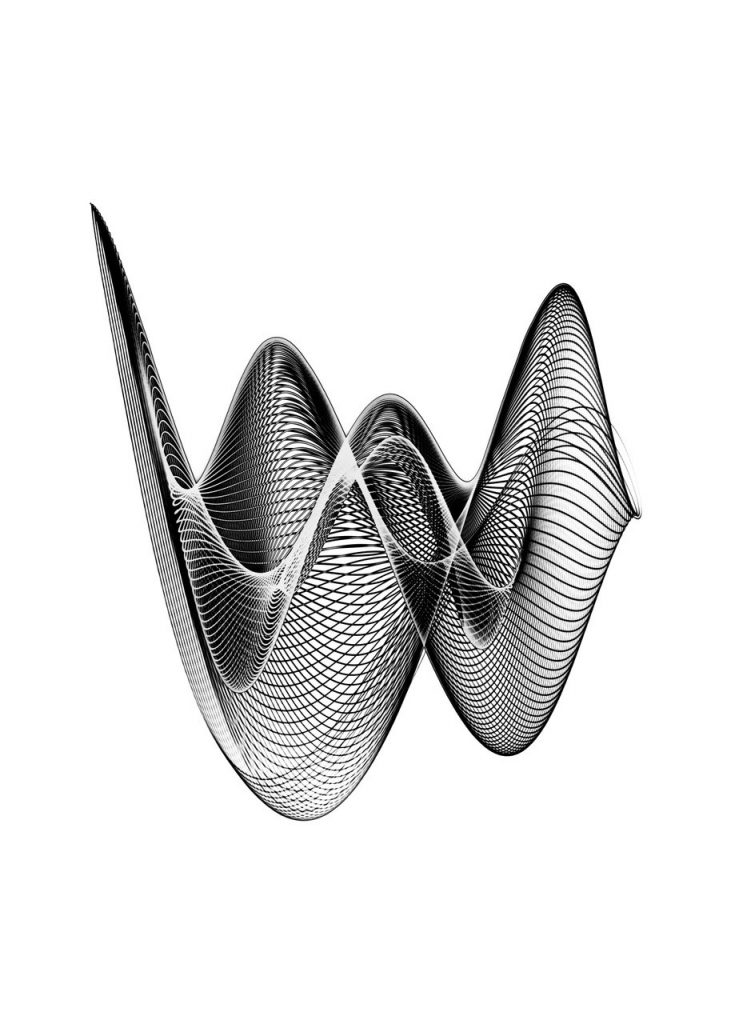Heinrich Heidersberger

Meeting Franke
By Benjamin Heidersberger, son of Heinrich Heidersberger
There are two different strings of my life that connect me to Herbert W. Franke.
I met Franke the first time in 1982. Ars Electronica (which he cofounded) had invited the artist group “Head Resonance Company” to the “Grosse Preis” where Peter Elsner and I realized a communication installation. Our Solar Powered Random Sound Generator (SPRSG) was planned for 1984.
The second life string is the Institute Heidersberger founded by Bernd Rodrian and me together with the City of Wolfsburg. Since 2002 it is archiving, researching and publishing the work of my father, the photographer Heinrich Heidersberger (1906-2006). Part of his work are his algorithmic experiments, inspired by Felix Auerbach’s “Physik in grafischen Darstellungen” (1912/1925). In 1955 the Rhythmograms were shown at the “Rat für Formgebung” in Darmstadt, at this time he had already created more than 100 pieces.
In 1980, at the age of 22 and with the financial help of the father, I translated and expanded his mechanical analog computer, the Rhythmograph, into an electronic analog computer with OpAmps and oscilloscope output.
I often met Herbert W. Franke, either at Ars Electronica, on the Internet or finally in a bookstore in Linz. There was always a feeling of being connected, like old friends or better like two delegates of the “Empire of Algorithm” whose missions brought them together again and again.
The exchange of Herbert W. Franke and my father is to be researched. In 2010 Franke wrote a text (“Die Lichtspuren von Heinrich Heidersberger (The Light Traces of Heinrich Heidersberger)”) where he is stating that the name Heidersberger was known to him since around 1960 because of his industrial photography and his Rhythmograms. He found my father’s “machine” to be very fascinating. In the book “Apparative Kunst” (Apparative Art) by Herbert W. Franke and Gottfried Jäger (Dumont 1973) my father can be found with his apparatus and his art.
I selected the “Rhythmogramm #3782_182b” from around 1956 for the Tribute of Herbert W. Franke because the work illustrates the possibilities of analog photography (Solarisation) with a richness of the light traces and the imperfections of an analog computer.
BIO
Heinrich Heidersberger (1906-2006) is one of the foremost photographers of modern Germany with a photographic career spanning nearly eight decades. Trained as a painter under Ferdinand Léger, Heinrich Heidersberger came to photography by chance. In his early career, he was known for his architectural photography and commissioned work by leading architects of the Braunschweig School, who particularly appreciated his light guidance. Fascinated by the idea of turning light into an object itself, in the early 1950s, Heinrich Heidersberger began to devote himself to luminography which he called Rhythmograms; the recording of a light source in motion.
Benjamin Heidersberger (* 1957) is a German media artist, journalist, entrepreneur and culture manager. He lives and works in Berlin and Wolfsburg. Heidersberger studied physics, biology, and computer science at the Technical University of Braunschweig in 1978 (dropout). From 1978 to 1984, he was part of the interdisciplinary artist group Head Resonance Company in Wolfsburg. Along with vocalist, sculptor and painter Peter Elsner, they conducted research on how ideas become reality in architecture, music, performance and installation.
In 1989, he co-founded the Ponton-Lab as an artist group and realised interactive media and TV-projects on Documenta 8 and Documenta IX, in Japan 1993 as well as on Ars Electronica 1986, 89, 90 and 94 under the brand Van Gogh TV. In 2002, he founded the Heidersberger Institute in Wolfsburg Castle to archive and publish the work of his father, photographer Heinrich Heidersberger. The Institute collaborates with contemporary artists to contextualise that work. Heidersberger realized the algorithmic piano composition Pentatonic Permutations in a series of concerts and sound installations, among others at Ars Electronica 2016.